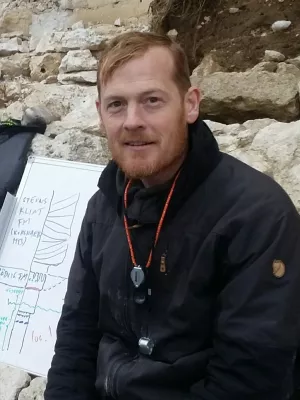
Mikael Calner
Professor

A sequence stratigraphical model for the late Ludfordian (Silurian) of Gotland, Sweden – implications for timing between changes in sea-level, palaeoecology, and the global carbon cycle
Author
Summary, in English
This paper investigates a time interval within the Late Ludfordian (Late Silurian), involving changes in faunal composition (the Lau Event), a major positive carbon isotope excursion (CIE), and contemporaneous sea-level changes in remote palaeo-basins. Based on the Silurian strata of Gotland (Sweden), we integrate sequence stratigraphy, carbon isotope stratigraphy, and platform-scale palaeoecological changes associated with this turbulent time period in Earth history. Three depositional sequences (sequences Nos. 1–3), including two separate periods of forced regression (falling stage systems tracts, FSSTs) are identified from outcrop and drillcore studies. The sequence stratigraphical framework is interpreted to reflect glacio-eustatic sea-level changes. The CIE starts at the onset of the initial FSST (sequence No. 1), just below the last appearance datum of the conodont Polygnathoides siluricus. The values increase through the ensuing lowstand and transgressive systems tracts (LST and TST) of sequence No. 2 and peak in the following highstand systems tract (HST). A second forced regression (FSST of sequence No. 2) took place in the lower Ozarkodina snajdri Zone. δ13C data are scarce from these siliciclastic strata, but inferably remain high. The δ13C values increase within the LST and earliest TST of sequence No. 3, before a decreasing trend starts within the early TST. δ13C values return to pre-excursion levels within the ensuing HST. The CIE is closely associated with an increase in stromatolites (mats and oncoids) across a wide range of depths and sedimentary environments, and correlations to other basins indicate a global increase in cyanobacterial activity. A drastic decline in level-bottom benthic faunas during the FSST of sequence No. 2 is, however, interpreted as a local response to the progradation of a delta complex (the Burgsvik Sandstone). Biological carbonate production replenishes rapidly within the TST of sequence No. 3, succeeding a thin LST dominated by reworked siliciclastics and chemically precipitated carbonates (ooids). The detailed relationship between the CIE and sea-level change presented herein is not fully consistent with previous reports on the CIEs associated with the lower Silurian Ireviken and Mulde events, respectively. Based on our facies analysis and sequence stratigraphical interpretation, two main mechanisms are suggested as responsible for the Late Ludfordian CIE: (1) a change in the riverine C-weathering flux towards the 13C end member following glacio-eustatically induced subaerial exposure of carbonate platforms throughout the tropics, and, (2) increased photosynthetic activity by benthic cyanobacteria exaggerating the δ13C values of precipitated carbonates.
Department/s
- Lithosphere and Biosphere Science
Publishing year
2008
Language
English
Pages
253-276
Publication/Series
Facies
Volume
54
Issue
2
Document type
Journal article
Publisher
Springer
Topic
- Geology
Keywords
- sequence stratigraphy
- sea-level change
- carbonate platforms
- climate
- carbon cycle
Status
Published
ISBN/ISSN/Other
- ISSN: 0172-9179

